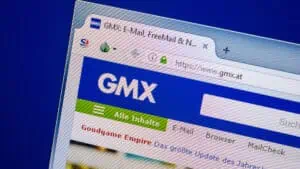As digital transformation reshapes every sector, QR codes have emerged as essential tools for bridging the physical and digital world.
While static QR codes have been widely adopted in marketing and logistics, dynamic QR codes are now gaining traction among IT departments for their flexibility, control, and trackability.
In this article, we explore what IT leaders, system architects, and developers need to know about integrating dynamic QR codes into their tech stack, from security to scalability.
What Is a Dynamic QR Code?
Unlike static QR codes, which embed fixed information (e.g. a URL or plain text) directly into the code, dynamic QR codes are linked to a redirect URL stored in the cloud. This means the destination content can be updated without changing the printed code itself.
This functionality is critical for enterprise environments where URLs, file locations, or campaign endpoints may change post-deployment.
Learn more in the dynamic QR code guide
Core IT Benefits of Dynamic QR Codes
1. Updatability and Version Control
With dynamic QR codes, updates to linked content do not require reprinting or reprogramming. Whether it’s an onboarding form, knowledge base article, or internal IT policy PDF, administrators can edit the destination while the QR code remains intact.
2. Analytics and Insights
Dynamic QR codes can collect metadata such as timestamp, location (via IP), device type, and scan count. These analytics offer valuable insights for IT teams into employee engagement, resource usage, or campaign performance.
3. Access Management and Security
Advanced QR code software allows for role-based access control, expiration dates, password protection, and domain restrictions. IT admins can ensure that only authorized users access sensitive internal content.
4. API Integration and Automation
Modern dynamic QR code platforms offer RESTful APIs, making it easy to integrate QR generation into existing software workflows. Whether creating user-specific QR badges, support documents, or system status links, automation enhances consistency and scalability.
IT Use Cases for Dynamic QR Codes
- Device provisioning: Attach a QR code to new hardware that links to setup guides or asset registration systems
- Software deployment: Link employees to the latest installer or changelog without altering the printed code
- Incident reporting: Let staff scan a QR code on physical infrastructure to trigger a ticket in your ITSM platform
- Compliance & audits: Create trackable access to security policies, with timestamped scan logs
- End-user support: Add QR codes to internal tools or signage for quick helpdesk instructions
Deployment Considerations
1. Hosting Environment
Choose a QR platform that hosts redirect logic on secure, ISO 27001-compliant infrastructure with high availability. Self-hosting may be considered for high-security environments.
2. Data Privacy (GDPR, CCPA)
Ensure the QR platform anonymizes scan data or complies with regional data protection laws. Look for explicit privacy settings and audit trails.
3. Branding and UX
Branded QR codes not only look more professional but can increase trust and engagement. IT teams can generate QR codes with logos, consistent color schemes, and even embedded CTA frames.
4. Maintenance and Lifecycle Management
Establish processes for periodically reviewing and updating QR-linked content to prevent link rot or obsolete documents.
The Strategic IT Value
Dynamic QR codes are not just marketing tools. For IT departments, they offer a practical, secure, and data-rich channel for managing digital access points across physical environments. They combine agility with traceability, and integrate well into DevOps, asset management, and IT governance workflows.
In short: they’re easy to deploy, but robust enough for enterprise-grade applications.
If your IT infrastructure touches end users, physical assets, or distributed documentation, now is the time to explore dynamic QR codes. Start with a reliable platform that prioritizes security and flexibility.
Get a deeper look into features, software selection, and implementation tips in the dynamic QR code guide.

















